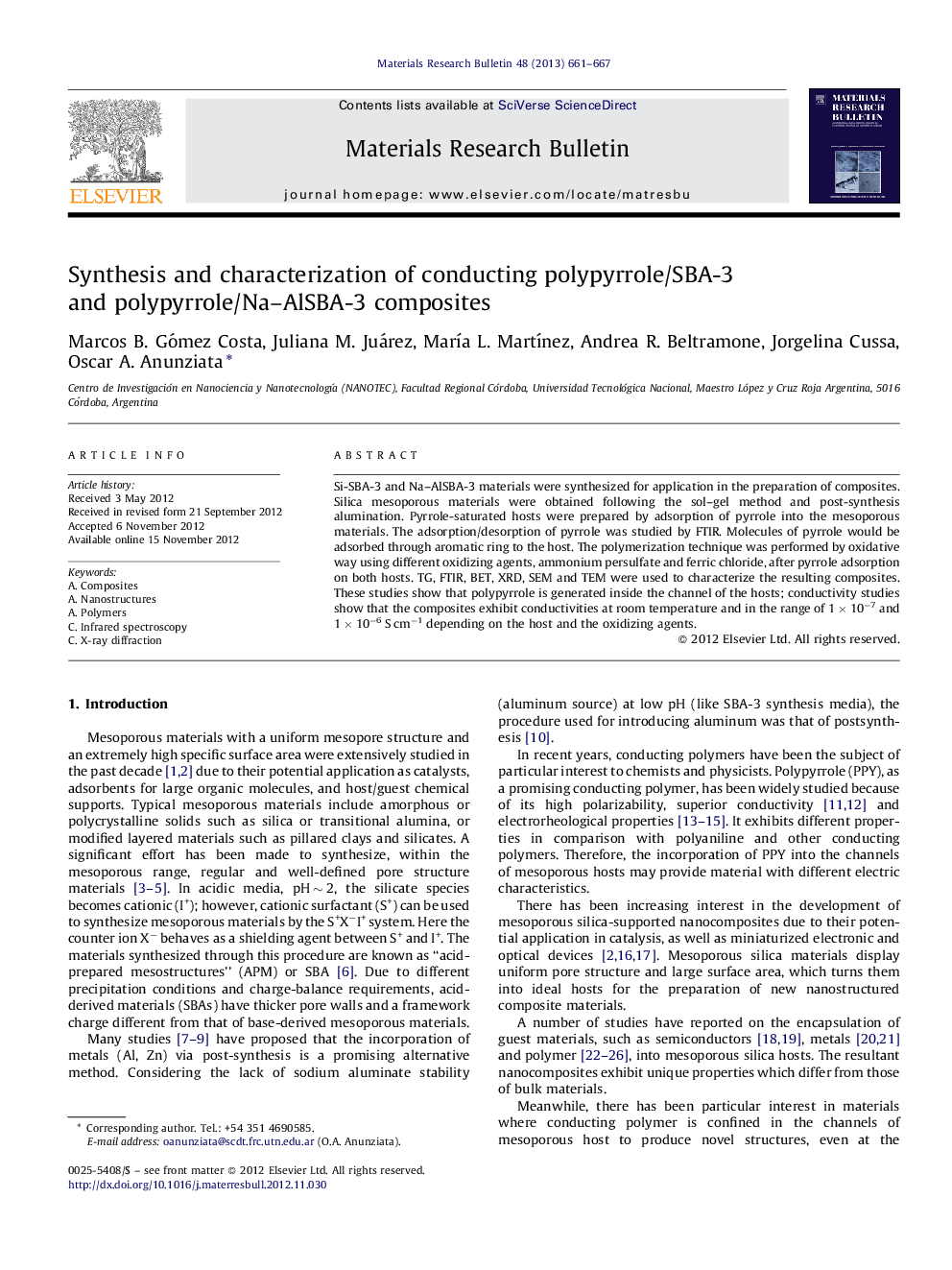| Article ID | Journal | Published Year | Pages | File Type |
|---|---|---|---|---|
| 1489884 | Materials Research Bulletin | 2013 | 7 Pages |
Si-SBA-3 and Na–AlSBA-3 materials were synthesized for application in the preparation of composites. Silica mesoporous materials were obtained following the sol–gel method and post-synthesis alumination. Pyrrole-saturated hosts were prepared by adsorption of pyrrole into the mesoporous materials. The adsorption/desorption of pyrrole was studied by FTIR. Molecules of pyrrole would be adsorbed through aromatic ring to the host. The polymerization technique was performed by oxidative way using different oxidizing agents, ammonium persulfate and ferric chloride, after pyrrole adsorption on both hosts. TG, FTIR, BET, XRD, SEM and TEM were used to characterize the resulting composites. These studies show that polypyrrole is generated inside the channel of the hosts; conductivity studies show that the composites exhibit conductivities at room temperature and in the range of 1 × 10−7 and 1 × 10−6 S cm−1 depending on the host and the oxidizing agents.
Graphical abstractFTIR spectra of pure polypyrrole polymer, pure SBA-3 (A), and aluminated-SBA-3 (B) used as hosts and the resulting composites, obtained by two different methods with different oxidants: ammonium persulfate (SPPY-composites) and ferric chloride (FePPY-composites).Figure optionsDownload full-size imageDownload as PowerPoint slideHighlights► Efficient in situ polymerization of pyrrole in SBA-3 and Al-SBA-3 hosts. ► New conducting polypyrrole/SBA-3 and polypyrrole/Na–AlSBA-3 composites. ► Polypyrrole nano wires encapsulated in SBA-3's conducting composites. ► Conductive behavior of composites as a function of anchored sites of the host structure.
